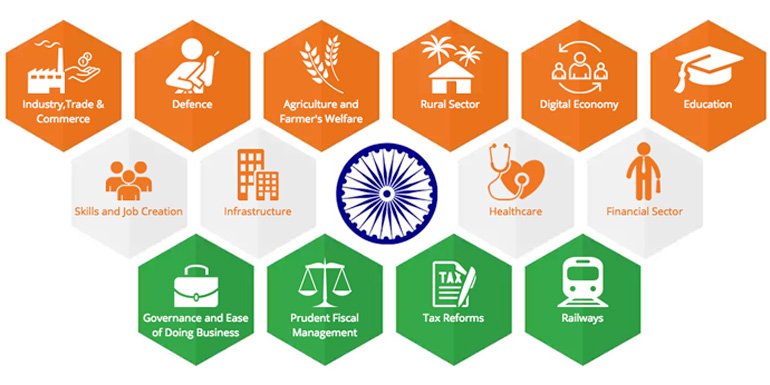During the Union Budget 2017, government has given a major push to Digital Economy. Union Minister for Finance and Corporate Affairs, Shri Arun Jaitley quoted saying that digital economy will weed-out corruption and black money from the country. India is now on the cusp of a massive digital revolution. A shift to digital payments has huge benefits for the common man. Here are some of the important announcements which are tech-related made by Finance minister.
Limiting liquid cash
- Government has decided that no transaction above Rs 3 lakh will be permitted in cash. Which means all transaction or money transfer above Rs 3 lakhs should be done digitally. This will further promote Net-banking, NEDFT, RTGS, Card transaction and cheque usage.
- Creation of Payments Regulatory Board in the Reserve Bank of India(RBI) to regulate the digital economy.

BHIM and Aadhaar Pay
- Bharat Interface for Money (BHIM) app from government of India has been in the forefront for digital transaction. More than 125 lakh people have already adopted the BHIM app. To further promote digital transaction through BHIM App, government has launched two promotional schemes. Referral Bonus Scheme for individuals users and a Cashback Scheme for merchants.
- Government to launch Aadhaar Pay, a merchant version of Aadhaar Enabled Payment System (AEPS).
- Government aims to achieve more than 2,500 crore digital transactions for 2017-18 through UPI, USSD, Aadhaar Pay, IMPS and debit cards.
- Banks to introduce 10 lakh new PoS terminals by March 2017. Also 20 lakh Aadhaar based PoS by September 2017.
- BCD, Excise/CV duty and SAD exemption on miniaturised POS card reader for m-POS, micro ATM standards version 1.5.1, Finger Print Readers/Scanners and Iris Scanners. This will bring down the cost of PoS machines and Aadhaar card readers.
- Government looking to mandates petrol pumps, fertilizer depots, municipalities, Block offices, road transport offices, universities, colleges, hospitals and other institutions to have facilities for digital payments, including BHIM App.
- Senior citizens to get Aadhaar-based smart cards which will have health information of the person.
Digital Education
- SWAYAM Platform – here students across India can virtually attend courses taught by the best faculty. To start with the platform will have at least 350 online courses. They can access high quality reading resources, participate in discussion forums, take tests and earn academic grades. Government also plan to open a DTH channels dedicated to education.
IRCTC
- Train ticket booking on IRCTC to cost less. Government decided to withdraw service tax on train ticket bookings through IRCTC, the online ticketing portal of Indian Railways. Currently IRCTC charges around Rs 40 of AC class train tickets and around Rs 20 for sleeper class tickets.
BharatNet Phase 2
- Government has allocated additional budget for optic-fibre based internet connectivity across 1.5 lakh gram panchayats in the country. Governments prestigious program BharatNet, which aims to connect gram panchayats across the country with high-speed optical fibre will complete its first phase by March 2017 connecting 100,000 gram panchayats.
- The BharatNet phase 2 will begin mid-2017 through a public-private partnership. It aims to connect 150,000 gram panchayats by September 2018.
Cybersecurity CERT-Fin
- To strengthen and secure the Indian financial sector which is moving towards digital economy, government will setup a Computer Emergency Response Team (CERT-Fin). The team will work in close coordination with all financial sector regulators and other stakeholders.
Core banking for Cooperative Banks
- Government aims to provide core banking facility for Cooperative Banks across the country. For that government will be seeking help from private companies like TCS, Infosys and FIS for core-banking software.
- Government has also proposed new payment banks and small banks in the country.


